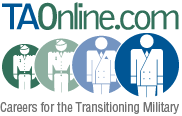Title:5 Essential Components of a Successful LinkedIn Profile
Author:Susan P. Joyce, © 2015 All rights reserved
Date:June 2015
Source:workcoachcafe.com
I see and hear many complaints about how LinkedIn "doesn't work" or "is a waste of time." Usually, when I look at the profile of the person making the complaint, the reason they are struggling is fairly obvious.
LinkedIn Is Not a "Quick Fix" for Your Job Search
I doubt that there is a quick fix for anyone. But, demonstrating your social media and technology savvy and creating a strong professional visibility for yourself, via LinkedIn, is not optional for most job seekers.
Employers and recruiters research job applicants and search for qualified job candidates. That's a "fact of life" in today's job market. And the best solution for job seekers is a LinkedIn Profile. Very few professions are exempt from that requirement.
Your LinkedIn Profile combined with your other LinkedIn activities should demonstrate your fit for the job - your relevant knowledge, skills, and experience. Remember, once you are visible and found, your online activities are an audition for your next job!
The Essential Components of a Successful LinkedIn Profile
Assuming that your Profile meets LinkedIn's requirement for a complete/"all star" profile, focus your attention on the following elements of an effective LinkedIn Profile:
-
Effective Professional Headline
This is the short description that follows your name everywhere on LinkedIn. To be most effective, it must be descriptive and attention getting, full of the right keywords for you and your target job.
By default, unless you edit that field, LinkedIn will use your current job title as your Headline.
Too many people underestimate the value of their Professional Headline - it is a key contributor to your Profile's appearance in LinkedIn search results. So, a vague or generic headline, like "Marketing Professional" (covering about 10,000 job titles) is useless.
Keywords are necessary!
Headlines like "Marketing Professional" are useless because they contain only one keyword ("marketing") which is typically used in combination with other words like "social media marketing" or "B2C marketing manager." Vague headlines guarantee poor placement in search results.
Worse, in this case, the Headline "Marketing Professional" seems to contradict itself by demonstrating poor personal marketing.
[MORE about keywords in your job search.]
Bragging is required.
This is not the time or place for modesty! (Or fiction!) "Social Media Marketing Specialist | Managing & Measuring Social Investment for Rapid Virtual Revenue and Profit Growth" is much more descriptive, interesting, and full of great keywords.
Your Professional Headline should stand out from the crowd, particularly when you are in job search mode. And, effective Professional Headlines both demonstrate and illuminate your unique (and highly sought after) professional abilities.
-
Quantified Accomplishments
The days of impressing a potential employer with a long list of duties or responsible-for statements is in your rearview mirror. Far, FAR back behind you.
Today, focus on your accomplishments - preferably quantified in some way that highlights your value to an employer.
OLD: Responsible for the profitability of three very large federal government proposals.
NEW: Bid manager for three U.S. Federal Government proposals exceeding $100 million dollars each, which returned 9% to 12% profit on each contract during the first 3 contract years.
Both OLD and NEW describe the same person's experience. See the dramatic difference in impact when the responsibility is quantified? Millions of dollars are not required for impact; the quantification provides the impact, even when much smaller numbers are involved.
ALWAYS: Think keywords! (e.g. bid manager, U.S. Federal Government, proposals, dollars, profit, contract)
-
Relevant Experience
In both the Work Experience and Summary sections, LinkedIn offers plenty of room to describe your work experience in each job. Take full advantage of the platform and opportunity provided.
Work Experience section
Don't stop with the job title, employer name, and years of employment! Make it clear what you did in that job (relevant to the target opportunity), and also make it clear what your employer did.
Focus on the aspects of each job and your (quantified) accomplishments in those jobs that are relevant to your target job. Describe each employer in the best possible terms, even if you hated working there. You don't need to be dishonest, but do find something to brag about.
For example, while you might have hated working for a car dealer, they were the biggest dealer in [whatever] cars in the [where ever] location. So, make it clear how big they were in your description of your job there, leaving out why you hated working there. Time for bragging about those former employers — making a former employer look good makes you look good too.
Summary section
This is not a resume, so write in first person. Describe yourself, focusing on your accomplishments, particularly those that are relevant to the job you want next.
For example, "Many people have told me that I seem to thrive on challenges. It's true. I greatly enjoy leading teams to accomplish near-impossible goals like remodeling and refitting a clothing store to become a sushi restaurant in less than 3 weeks. During my last job, I..."
AGAIN: Think keywords! Focus on the keywords relevant to your target job. Use your past to lay the groundwork for your future.
-
Headshot Photo
Many people, myself included, hate having personal photos viewable by the whole world, but the reality is that a LinkedIn Profile without a good headshot photo is likely to be ignored. The assumption made is that the person is clueless or the profile is bogus. Neither assumption will help your job search.
[MORE: 5 Very Important Reasons to Have Your Photo on LinkedIn.]
-
Contact information
Being found (keywords!) is a key element in your job search. But, without contact information visible, being found is nearly useless. Unless you have an extremely scarce skill, being easy to contact is required.
LinkedIn now offers an obvious place for your contact information. Simply click on the contact card near the bottom of the box at the top of your Profile.
LIMIT the contact information to your email address (personal, not work-related, is best). Do not include your address and home or work phone numbers. If you have a job-search-only cell phone, you might find it helpful, but be careful of answering at work or in a noisy location (or when you are driving your car).
[MORE: To Be Hired, Be Reachable.]

